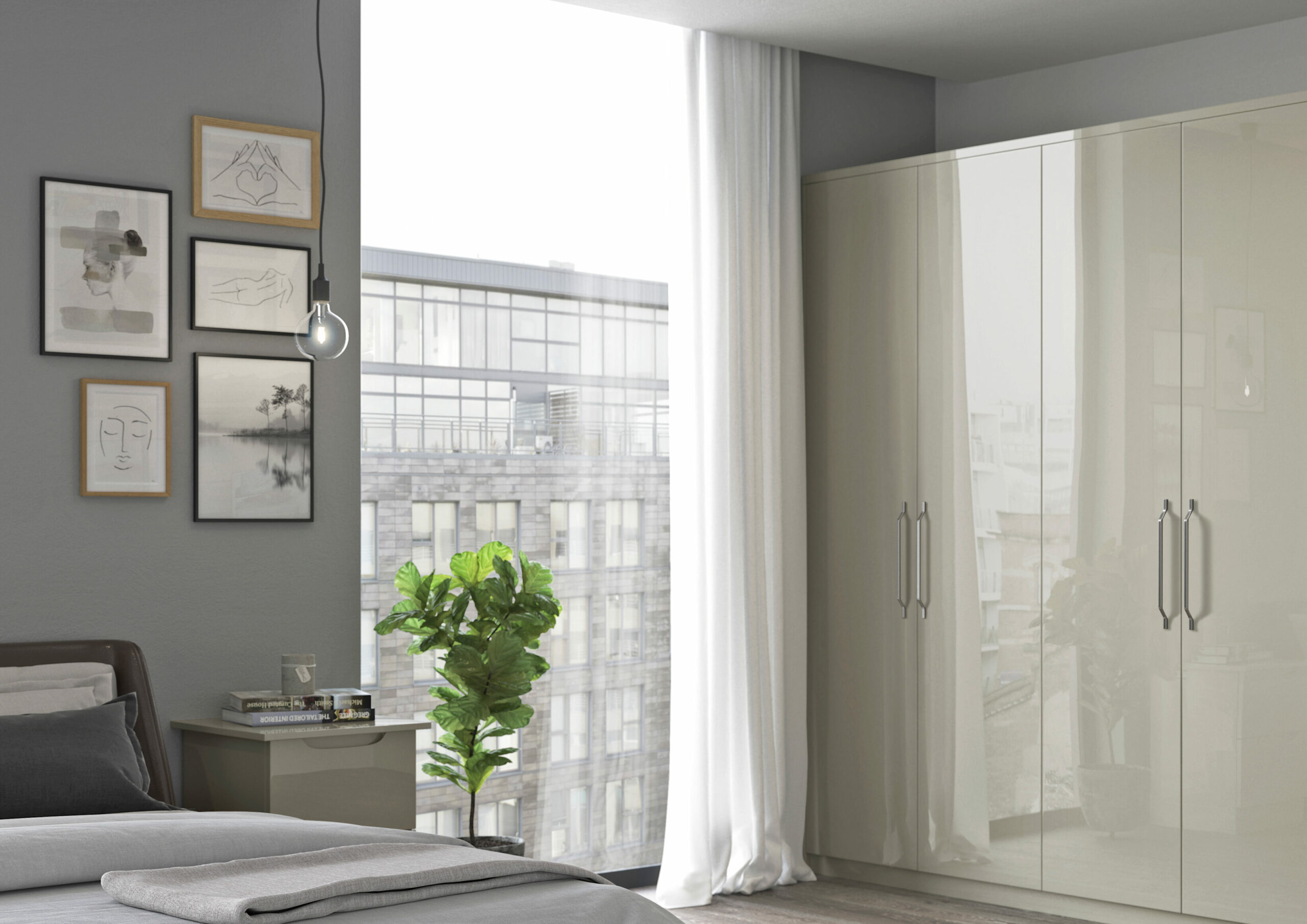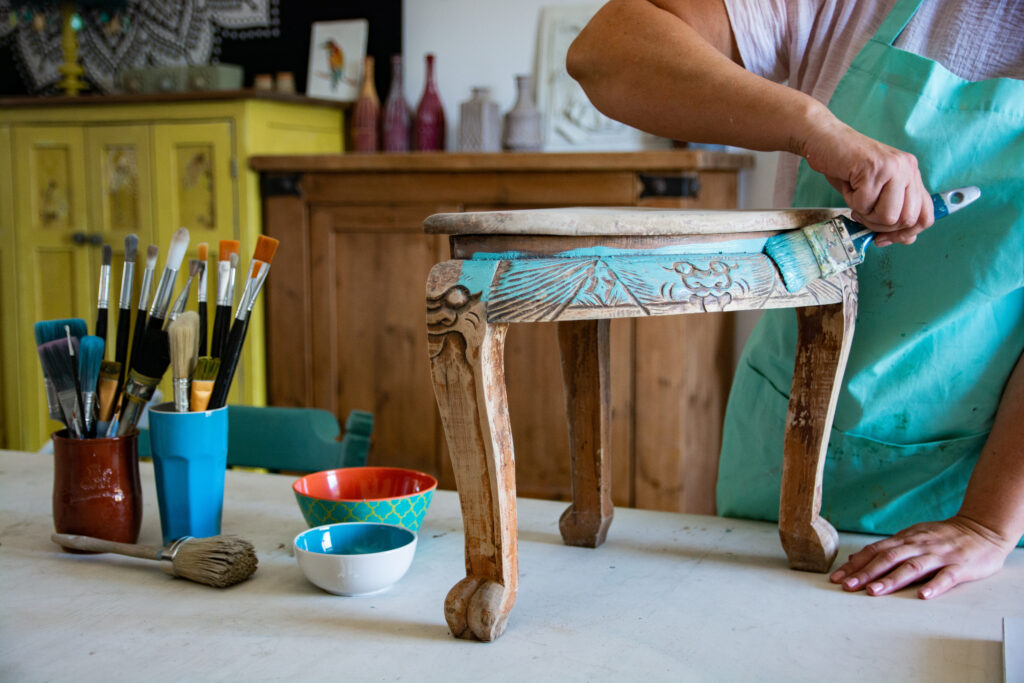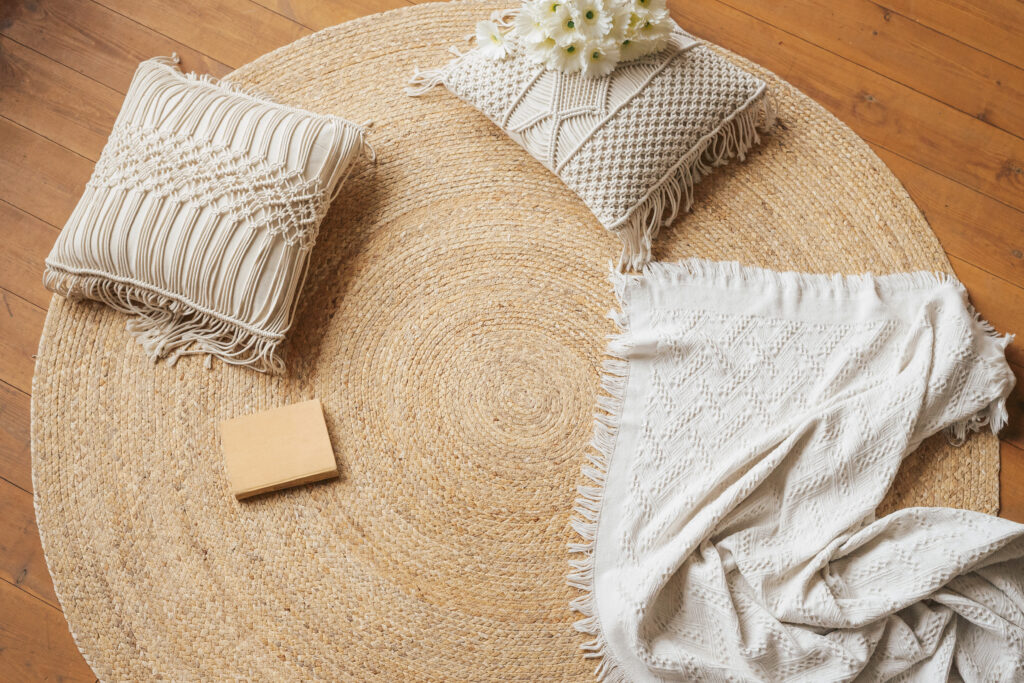Lots of us are taking steps in our everyday life to be more environmentally friendly. However, our home interior is an area that is easily forgotten when it comes to sustainability. In light of Earth Day last week, we have created this blog detailing tips on how to make your home more eco-friendly.
Energy Efficiency
Energy consumption is one of the biggest contributors to environmental change. To reduce our impact, we can improve our home’s energy efficiency by decreasing the amount of energy we use for heating, lighting and running appliances.
Most of our indoor heat escapes through windows so installing high-quality windows with good insulation can reduce this. Insulating curtains and blinds can keep the cold air or the sun’s heat outside. Opening and closing them can control the room temperature in an energy-efficient way.

Picking the right colours can help to save energy used for lighting. Lighter colours reflect more natural light, while darker colours need more artificial lighting. Using reflective surfaces helps to increase the amount of light in a room, so less artificial lighting is needed.
Most people have heard of or used LED light bulbs and they are a great solution for the future of our planet. They use around 75% less energy and last 25 times longer than conventional light bulbs, so are a great way of saving energy as well as waste!
Waste Reduction
Fortunately, recycling, upcycling and repurposing are all increasing in popularity and becoming a new norm. Most people in the UK have a recycling bin collection. Make sure your household is using a separate recycling bin and check your packaging to make sure you’re recycling everything you can.
When buying new home items or furniture it is worth researching items that are made from recycled waste and can be recycled. A lot of mainstream shops and supermarkets have introduced recycled ranges to their products. Look out for these in-store, or better still find local or small businesses that specialise in eco-friendly products. We’ll talk about specific materials later in the blog.
Reuse or Upcycle
Reusing or upcycling your old items for different functions can be fun and creative! There are many knowledgeable experts giving advice and tutorials online. These can range from simple ideas to more complex projects that require specific skills. Whether it’s upcycling a coffee table by giving it a new colour or creating garden decorations out of fairy lights and old jars, you’re sure to find something to suit you. It’s a great idea to reuse and upcycle non-recyclable items that would otherwise end up in landfill or be destroyed. So before you throw something away think about if there’s anything useful you can make from it.

If DIY isn’t your thing, you can always find a local business to help with your project. Our door replacement service is a great way to refresh your interiors, such as your kitchen cabinets or bedroom wardrobe, without having to start again with new cabinetry.
Another sustainable practice is shopping second-hand. Places like charity shops, antique shops or online websites such as eBay sell a great range of furniture and interior items and you can find some real treasures! It is a fun way to help to reduce wastage and can also save you some money. Second-hand items can also be a great starting point for an upcycling project.
Timeless and Flexible Design
The lifespan of home items should be considered to make sure they last longer and don’t get discarded quickly. This should especially be considered if the item will be used daily and subject to more wear and tear. It is way more eco-friendly (and cheaper in the long-term) to invest in a higher-quality item than to have to buy a new one often.
It is also necessary to consider the flexibility of your interior design. This is especially important when looking to completely renovate a space or purchase large furniture. The key to a flexible interior is to choose high-quality, classic and simple furniture, instead of following trends that you might get bored of or might go out of fashion. Then if you change your mind about your colour scheme in the future, you don’t need to throw away all of your furniture, you can just adapt it to fit in.
Sustainable Materials
Choosing sustainable and responsibly sourced materials is important for an eco-friendly interior. We touched on this earlier when talking about choosing products made from recycled waste. Here we’ll go into more detail about some of the most sustainable materials to look out for.
It goes without saying that cutting down trees for new furniture is not good for the environment. Choosing reclaimed wood is a much more eco-friendly option. This can also provide a more rustic style if that suits your interior theme. Bamboo has surged in popularity in the interior design world and is a great versatile material. It has a high strength-to-weight ratio and is a fast-growing and renewable resource. It also doesn’t require much, if any, fertilizers or pesticides, so it is great for the environment.

Recycled metal is a great material for saving energy as it requires less processing and resources than non-renewable materials. It can also be repeatedly recycled without degrading its properties. Recycled plastic is diverse in its uses in interior design. From rugs to furniture there are many ways it can be used. The colour of the plastic is solid throughout, meaning it is highly fade-resistant and keeps its new quality for a long time. Jute fibre is a natural affordable fibre that, similarly to bamboo, grows quickly and is renewable. Jute rugs and accessories add an eco, earthy look to an interior, and are also a good heat insulator!
Eco Appliances
When it comes to appliances such as dishwashers, refrigerators, ovens and washing machines, there are plenty of more eco-friendly options. These appliances can use a lot of energy or water so finding one that reduces this consumption is much better for the environment. These can be a little pricier than standard appliances, however, using less energy and water is going to save you money in the long term. If upgrading your appliances isn’t in your budget, some appliances should have an eco option. For example, washing machines that have an eco option that uses a lower temperature.
We hope that this blog has inspired you to make some more eco-friendly changes in your home! If you are interested in any of our services for your eco-interior project, then get in touch!


Recent Comments